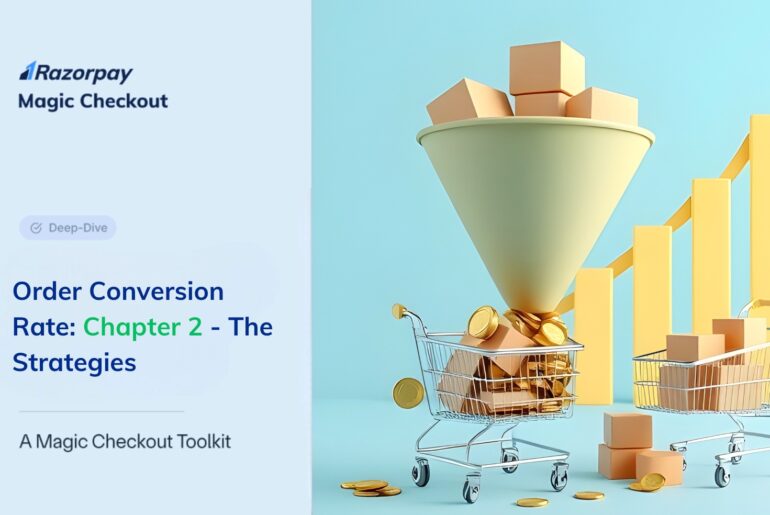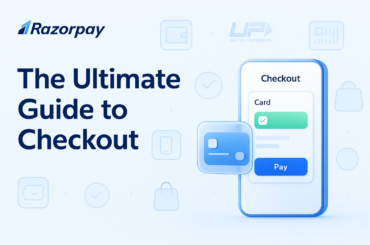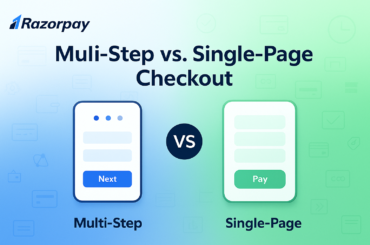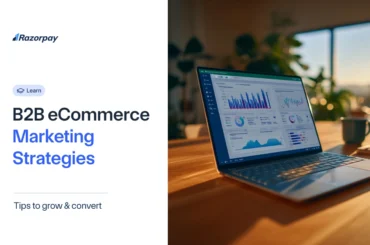Second Blog in Our Order Conversion Rate Blog Series
The path to higher order conversion rates is built on precise strategy, data-driven insights, and optimization at every touchpoint of the customer journey. While attracting traffic is a crucial step, converting that traffic into paying customers requires thoughtful planning and execution across your website and checkout process. In this blog, we will explore the best practices and strategies to help you optimize your site and checkout flow, ultimately driving your order conversion rate upward. These strategies focus on actionable tactics that you can apply immediately to see tangible improvements.
10 Strategies to Boost Your Order Conversion Rate
Table of Contents
A/B Testing and Analytics: The Foundation of Data-Driven Decisions
One of the most effective ways to optimize your order conversion rate is through A/B testing and analytics. A/B testing allows you to compare different variations of a page or an element (e.g., CTA buttons, product images, or checkout flow) to see which version performs better. By testing one element at a time, you can make informed decisions about what works best for your audience.
Why it Works:
A/B testing helps eliminate guesswork by providing real data on what resonates with your visitors. Instead of relying on assumptions, you can optimize your website based on actual user behavior. This allows for continuous improvement and ensures that you’re not missing out on potential conversions.
Best Practices:
- Test a single element at a time for clarity.
- Use analytics tools like Google Analytics or Hotjar to gain insights into user behavior.
- Regularly conduct A/B tests to keep your site optimized for changing user preferences.
Optimizing Checkout Flow: Reducing Friction for a Seamless Experience
 An optimized checkout flow is crucial for reducing friction and making the entire purchase process as easy as possible. Simplifying your checkout and minimizing unnecessary steps can significantly improve order conversion rates.
An optimized checkout flow is crucial for reducing friction and making the entire purchase process as easy as possible. Simplifying your checkout and minimizing unnecessary steps can significantly improve order conversion rates.
Best Practices:
- Enable One-Click Checkout: Simplify the checkout process by offering one-click checkout options that pre-fill customer details, reducing the need for repetitive data entry.
- Remove Unnecessary Steps: Remove or consolidate steps in the checkout flow, such as offering fewer form fields or eliminating the need for account creation.
- Mobile Optimization: Ensure your checkout is optimized for mobile users. Many customers abandon their carts on mobile if the checkout process is cumbersome.
- Choose the Right One-Click Checkout Partner: Selecting the right checkout solution is crucial for maximizing order conversion rates. Magic Checkout, for example, pre-fills customer information, displays multiple payment options (including Cash on Delivery), highlights available offers, ensures secure transactions, and provides customization options to match your brand’s identity.
Why it Works:
By streamlining the checkout process, you minimize the number of obstacles standing between your customers and completing their purchase. A quicker, easier checkout process means fewer abandoned carts and higher order conversion rates.
Real-Life Example: Borosil
Borosil, an iconic Indian glassware brand, wanted to enhance their customer’s checkout experience while also reducing their Return to Origin rates. To address this, they implemented a faster, streamlined checkout process with Magic Checkout, which prefilled shopper details and simplified the entire flow. This innovation resulted in 5x faster checkouts and a 36.36% reduction in RTO rates. By speeding up the process and making it easier for customers to complete their purchases, Borosil saw improved customer satisfaction and boosted order conversion rates.
Best Practices for Optimizing Checkout Flow:
- Auto-Fill Information:
Ensure that your one-click checkout process auto-fills all necessary information, such as contact details, shipping addresses, and payment methods. This reduces friction, saves time, and makes the experience more convenient for the customer. - Checkout Security:
Make sure your checkout process is secure to use. It’s best to partner with a provider that is SOC certified, PCI DSS compliant, ISO certified, and adheres to RBI guidelines for secure transactions. This builds trust with your customers and protects both their information and your business. Click here to learn more. - Multiple Payment Options:
Display a variety of payment methods on your checkout page to cater to different shopper preferences. This should include credit/debit cards, net banking, wallets, and Cash on Delivery (COD). If you’re concerned about higher RTO (Return to Origin) rates for COD, explore strategies to mitigate these risks. - Offers and Discounts:
Shoppers are motivated by deals. Display the best available offers, discounts, and coupons on the checkout page, encouraging customers to finalize their purchase by providing them with attractive incentives. Click here to learn more. - Customization:
Choose a checkout provider that allows you to personalize the checkout experience according to your brand’s identity. Customizing the page with your brand’s colors, logo, and festive themes can enhance the experience and help boost your order conversion rate. Click here to learn more.
Read Also: A Brand-New Checkout from Razorpay is Here!
Personalization: Tailoring the Experience to Increase Engagement
Personalization has become a key factor in increasing order conversion rates. Personalized experiences make customers feel more understood and valued, which can lead to higher engagement and a greater likelihood of purchase.
Why it Works:
Personalized experiences, such as product recommendations, personalized CTAs, or offering saved carts, align your offerings with the specific preferences of your users, leading to a higher chance of conversion. This approach enhances user engagement, reduces friction, and builds trust.
Best Practices:
- Product Recommendations: Leverage tools like machine learning to recommend products based on user behavior, location, and past purchases.
- Dynamic Content: Display dynamic content based on a user’s browsing history or demographic information.
- Saved Carts: Allow customers to save their carts for future visits, making it easier for them to complete their purchase later.
Real-Life Example:
Amazon is a master of personalization. By utilizing algorithms that suggest products based on previous browsing history and purchasing behavior, they’ve been able to achieve a conversion rate 2–3 times higher than the industry average. This personalized approach plays a significant role in their success.
Using Social Proof: Harnessing the Power of Customer Reviews and Testimonials
Social proof through reviews, ratings, and testimonials has proven to influence purchase decisions. Customers are more likely to convert when they see that others have had positive experiences with your product or service.
Why it Works:
Social proof helps build trust. When customers see that others have purchased and had a positive experience, they’re more likely to feel confident in their own purchase decision. It reduces the perceived risk of buying from an unfamiliar brand or store.
Best Practices:
- Display Reviews Prominently: Place reviews near product descriptions and on the home page to build trust.
- Encourage Reviews: After a purchase, ask customers to leave reviews. Incentivize them with discounts or loyalty points.
- Use User-Generated Content: Showcase customer photos or videos using your product to enhance authenticity.
Retargeting and Abandoned Cart Recovery: Bringing Back Lost Customers
Abandoned carts are a common issue for e-commerce businesses. Retargeting ads and abandoned cart recovery emails are proven tactics to bring back users who initially showed interest but left without completing their purchase.
Why it Works:
Retargeting ads and email reminders tap into potential customers who have already demonstrated interest in your products. By reminding them of their abandoned cart and offering additional incentives (such as discounts or free shipping), you can recover a significant portion of lost sales.
Best Practices:
- Send Personalized Emails: Remind customers of the items left in their cart with personalized email content, including images of the products.
- Use Dynamic Retargeting Ads: Display the exact products users viewed or left behind using retargeting ads on platforms like Facebook and Google.
- Offer Incentives: Use discount codes or free shipping to encourage customers to complete their purchases.
Optimizing Mobile Experience: Catering to Mobile Shoppers
With mobile commerce steadily growing, ensuring your website is optimized for mobile users is critical. Poor mobile optimization can lead to higher bounce rates and abandoned carts, ultimately hurting your order conversion rate.
Why it Works:
Mobile shoppers expect a seamless and fast browsing experience. Websites that are not optimized for mobile tend to have slow loading times, hard-to-click buttons, and poor navigation—leading to frustration and cart abandonment.
Best Practices:
- Responsive Design: Ensure your website design is fully responsive, adjusting smoothly to different screen sizes.
- Fast Load Times: Mobile users are less patient with slow websites, so improving site speed is essential. Compress images and reduce the number of redirects to boost performance.
- Simplify Navigation: Create an intuitive and easy-to-use mobile interface that allows customers to quickly find what they’re looking for and checkout with minimal effort.
Optimizing Product Pages: Creating an Irresistible Offer
The product page is often the final step before a customer decides to purchase. This page should give visitors all the information they need to make an informed buying decision, and it should make the product irresistible.
Why it Works:
A well-designed product page can increase customer confidence, reduce hesitation, and ultimately lead to a higher order conversion rate. The more you can showcase the product’s benefits, provide social proof, and answer potential questions, the more likely you are to convert visitors into customers.
Best Practices:
- High-Quality Images and Videos: Show your products from different angles and include videos where possible. This provides a better sense of the product and builds trust.
- Clear, Persuasive Copy: Ensure product descriptions are clear and compelling, highlighting the key benefits and features.
- Size Guides and FAQs: For apparel or size-dependent items, ensure you include a clear size guide. Include an FAQ section to address common queries.
Creating Urgency with Limited-Time Offers
 Creating a sense of urgency can prompt customers to complete their purchase faster. Limited-time offers or countdown timers can drive urgency and increase order conversion rates by encouraging shoppers to act quickly before the offer expires.
Creating a sense of urgency can prompt customers to complete their purchase faster. Limited-time offers or countdown timers can drive urgency and increase order conversion rates by encouraging shoppers to act quickly before the offer expires.
Why it Works:
Urgency triggers customers to make decisions faster, reducing the chances of abandoning their carts. Limited-time offers leverage the principle of scarcity, which motivates customers to act quickly to avoid missing out on a deal.
Best Practices:
- Countdown Timers: Display timers showing how much time remains on a promotion or sale.
- Limited-Time Discounts: Offer time-sensitive discounts, such as “10% off in the next 2 hours,” to encourage quick purchases.
- Stock Availability Alerts: Let customers know when an item is low in stock to trigger urgency.
Real-Life Example:
Amazon uses limited-time offers and countdown timers to create urgency, especially around Prime Day and Black Friday sales. This strategy helps boost conversions by prompting customers to act quickly.
Offering Free Shipping: A Conversion Booster
Shipping fees are a common reason for cart abandonment. Offering free shipping, whether as a limited-time offer or a standard feature for orders above a certain amount, can boost your order conversion rates significantly.
Why it Works:
Shipping costs are often the final obstacle standing between a customer and a completed purchase. When customers feel that they’re getting a better deal by receiving free shipping, they’re more likely to convert.
Best Practices:
- Set Minimum Order Thresholds: Offer free shipping on orders over a certain amount, which can encourage customers to purchase more.
- Promote Free Shipping on Key Pages: Ensure customers are aware of free shipping on product pages, the cart page, and checkout.
Offering Payment Flexibility: Catering to Different Preferences
Different customers have different payment preferences, and offering flexibility in payment options can enhance your order conversion rates. This includes providing multiple payment methods and even options like Buy Now, Pay Later (BNPL).
Why it Works:
Providing a range of payment methods helps cater to a broader audience. Some customers may prefer paying with credit cards, while others may favor mobile wallets, UPI, or BNPL options. The more options you offer, the more likely customers are to complete their purchases.
Best Practices:
- Offer Multiple Payment Methods: Include credit/debit cards, mobile wallets and newer payment methods like BNPL.
- Incorporate Partial Payment Options for Higher Conversions: Allowing customers to pay a small upfront amount and the rest upon delivery, like Razorpay’s Partial Payments, can increase order conversion rates by offering more flexibility and making purchases easier to complete.
Ready to Take Your Order Conversion Rate to the Next Level?
Optimizing your order conversion rate isn’t just about fixing one part of the funnel—it’s about continuously improving and refining the entire user experience. By implementing these strategies, from A/B testing to offering flexible payment options, you can significantly enhance your website’s performance and increase your order conversion rates.
In the next chapter of our series ‘Common Myths About Order Conversion Rate,’ we’ll debunk common misconceptions surrounding order conversion rates and reveal the truths behind them to help you better understand what truly impacts your conversions.
If you missed the first blog in our Order Conversion Rate series, Order Conversion Rate 101: What It Is and Why It Matters, catch up now by clicking here!




